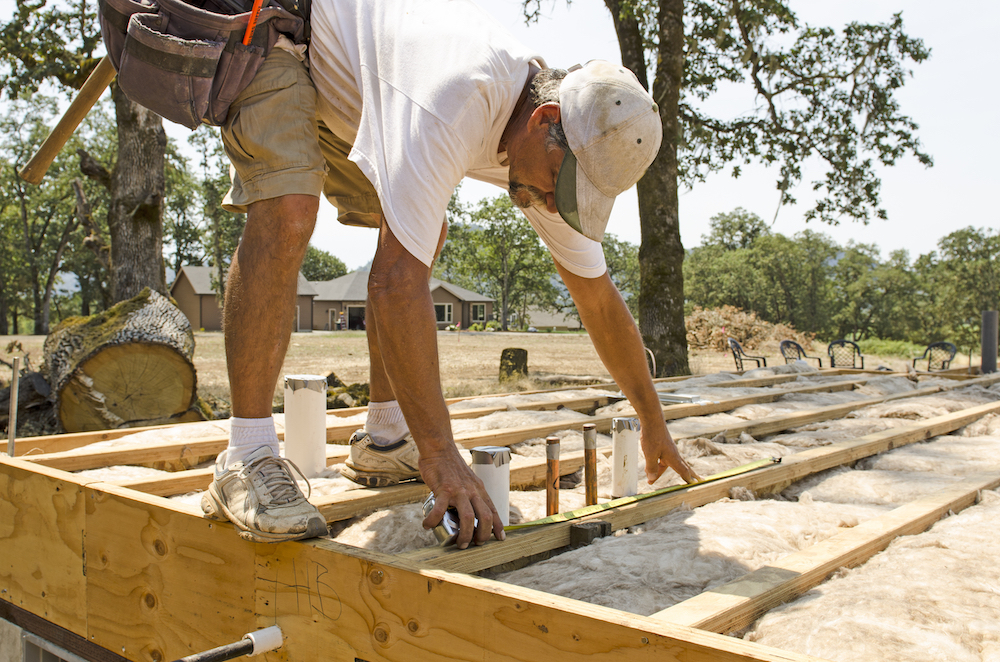
Pay applications, although they seem simple, are more complicated than most people think. That’s because they aren’t simply an invoice for work performed, but rather a bundle of documents needed to prove that the work was performed, and the amount requested is legitimate.
Getting this process done right the first time is vital to the successful completion of the project. Any mistakes on a payment application could lead to delays, present cash flow issues, and sour business relationships.
Common mistakes on pay application
Getting paid for what you’ve earned and maintaining steady cash flow is crucial for any construction project. Unfortunately, preparing a full pay application and gathering all of the necessary documentation is a tedious and time-consuming process.
Making a single mistake on one of these pay apps can cause it to be denied, sent back for revisions, then re-submitted for approval. That can waste a lot of time and cause subs to float more costs themselves before receiving payment. Also, depending on the severity of the mistake, those requesting payment could wind up being liable for false representations.
Let’s take a look at some common mistakes that should be avoided when submitting your payment applications.
1. Failing to send timely, regular submittals
This one may seem obvious, but it comes as no surprise that this is one of the most common reasons that a pay application will be rejected. The contract terms between the parties should set out a payment schedule, designating when pay applications should be submitted. If the contract requires submission on the 1st of each month, make sure the pay app actually is received on the 1st of each month.
If the contract doesn’t specify the timing of pay application submittals, formulate your own schedule, and submit the applications regularly. Try to pair it up with the draw request schedule if that info is available to you. Generally, most pay applications are submitted monthly. This not only helps prevent sticker shock by charging later on in the project but also keeps everything fresh in mind.
The longer you wait to submit your request, the more difficult verifying work completed will be. And if you wait too long, the funds from that draw may have already been diverted to other payment applications. Don’t fall behind!
2. Never following up on submitted pay apps
Look, there is an absurd amount of documents that are regularly exchanged on construction projects. Making it difficult for anyone to properly track and organize them all. Sometimes document could get lost in transit, misplaced, or simply forgotten about. If payment isn’t released on the day it becomes due, pick up the phone and call someone. Communication is one of the best ways to facilitate payment in the construction industry.
If the phone call doesn’t produce any results, it may be time to send a more formal written request for payment. At least that way, if matters become worse, you have physical evidence of the amount overdue and your efforts to collect payment before taking more extreme measures.
Also, if the state you are working in has a Prompt Payment Act on the books, mention it. The written demand should mention the Act, inform the party that they are in violation, and state that an action under the Act will be initiated if payment isn’t forthcoming. Citing any applicable law is an easy way to get attention quickly.
3. Forgetting to include lien waivers
Practically every construction project will require lien waivers in some fashion or another. The contract will typically state that lien waivers (conditional ones!) be sent with pay applications in exchange for payment. Not only from the contractor seeking payment, but also from their subs and suppliers as well. Waivers should be gathered at every tier of the payment chain, and failure to do so could slow down the payment process.
Keep in mind that they must all eventually reach the top, and the owner may be hesitant to release funds to the project if any are missing. Plus, a payment delay will slow down payment for everyone along the payment chain.
4. Not accounting for change orders
Change orders can cause nightmares for subcontractors if not handled properly. No matter which form of pay application is being used, there is certainly a space to add change orders. If not, be sure to add it yourself.
Subs often go unpaid for undocumented change orders, so it is crucial to fill these numbers out correctly. The pay app should break down and account for any additions or deductions to the contract price. Add all these up to reach a net total of changes caused by change orders. Also, when filling out a pay application, be sure to reference and include all change order requests, associated invoices, and any other documentation of the additional work.
5. Inaccurate schedule of values
A copy of the schedule of values (or continuation sheet) should be submitted along with the pay application. A schedule of values is a start-to-finish list of work items on a project; broken down into their component parts and with corresponding values; that in total, represent the entire project from beginning to end, and the entire contract price. The SOV will dictate how cash flow operates on the project.
Besides acting as a budgeting tool, it is also meant to act as a reference for the person evaluating pay applications. The pay app amounts should match up with the cost of each line item and the corresponding progress percentage.
That being said, tinkering with the schedule of values is never recommended. Many contractors do attempt to frontload their SOVs in order to obtain more money on an earlier pay application. This could lead to all sorts of problems. Unexpected cost overruns might be hard to recoup, subbing out work could lead to messy disputes regarding their payment application, and a litany of other issues could pop up.
At the end of the day, manipulating your schedule of values can lead to more problems than it solves. Therefore, when including an SOV in the payment application, make sure it’s accurate and reflects actual costs of performance.
6. Insufficient evidence of work performed
This is an important inclusion to a pay app bundle. Every pay application should include as much supporting evidence of the labor or materials furnished as possible. This can consist of a number of different documents. The more obvious ones being any and all invoices, payrolls, purchase orders, and material delivery confirmations.
Other supporting documents that can speed up the process is evidence about the actual progress of the work. One of the most effective ways to support a claim for payment is through daily construction reports. Having a daily report process on the job site may seem like an overly burdensome task, it’s incredibly useful evidence of work performed.
The more details provided, the more likely the application will be approved. Speaking of details, a nice way to bolster the effectiveness of your daily reports is to attach photos of the work progress.
7. Failure to notarize
Putting aside my personal grievances with this incredibly unnecessary practice, there are many instances where a pay application must be notarized. Legally speaking, there is never a requirement for pay apps to be notarized. Unfortunately, it is not uncommon for project managers to require that they are. In fact, two of the most prominent standardized pay apps that are used in construction (AIA & ConsensusDocs) both include a notary block.
Ultimately, if the contract requires that pay apps need to be notarized, just do it. It’d be a shame to have a perfectly valid pay app rejected because the notary stamp was left off.
Bottom line, if the contract requires that pay apps be notarized, the best option may be just to do it. It’d be a shame to have a perfectly valid pay app rejected because the notary stamp was left off.
8. Certified payroll records (for public projects)
Working on public projects can mean big money, but it also means more requirements and regulations. All federal and most state projects impose prevailing wage requirements. Essentially, these are protections in place to ensure that contractors, subs, and suppliers on such jobs are adequately paid.
One specific requirement on prevailing wage jobs is the submission of certified payrolls with pay applications. A payroll record is considered certified if it is accompanied by a Statement of Compliance signed by the contractor who is charged with supervising payments under the contract. These are statutorily regulated, so be sure they’re in the proper form for your state. As for federal projects, the form to be used is known as the WH-347 form.
Click here to download a free, pay application template
Bottom line
The payment process in the construction industry is a complex one at best. Getting the pay application filled out and submitted right the first time is crucial to maintain cash flow. Mistakes lead to delays, delays lead to claims, and claims cost money.
There’s no reason to make things more complicated than they already are. Avoiding some of these common mistakes can help ensure that you get paid what you’ve earned in a timely, and pain-free fashion.
Additional resources
- Pay Applications Overview & FAQs
- Speeding Up Customer Payments with Technology
- Construction Documentation Management


